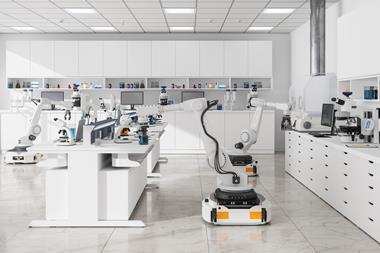Physics is embroiled in a funding crisis. In both the UK and US, scientists have seen unexpectedly harsh budget settlements by government, which will halt research projects and force job cuts.
The saga illustrates a worrying trend of short-term thinking in public science funding. Back in March 2007, the UK research councils saw a sudden loss of £68 million from their budgets (see Chemistry World, April 2007, p10), as the Department of Trade and Industry (DTI) tried to mitigate its own overspending. Although a relatively small proportion of the total science budget, the last-minute cut meant that many research projects had to be put on ice with no warning.
Then in December, the UK’s Department of Innovation, Universities and Skills (Dius), which last year took over responsibility for science from the DTI, snatched £92 million from the Medical Research Council, which the MRC had earned by exploiting intellectual property and planned to plough back into research.
The recent budget settlement in the US has also hammered science, seeing funding cuts in real terms across all the major science agencies.
And the Science and Technology Facilities Council (STFC), which oversees physics research and infrastructure such as the Diamond synchrotron light source, announced on 11 December that it faced a shortfall of £80 million over the next three years. The cause of the shortfall is still uncertain, although physicists have blamed both government and the STFC for bungling the budget.
What’s clearer is that the STFC could be forced to cut 25 per cent of its university physics grants and withdraw from a number of international projects, such as the International Linear Collider. The Daresbury Laboratory in Warrington - a synchrotron source famed amongst British chemists for its excellent x-ray facilities, and rather less excellent canteen - is said to be particularly vulnerable, having been told to find savings of £6.5 million.
Once again, it is not necessarily the size of the shortfall, but the suddenness of the axe, which is so worrying. And the damage will reach far beyond what is traditionally considered to be physics. The ISIS spallation neutron source at the Rutherford Appleton Laboratory in Oxfordshire - used by about 10,000 scientists every year, and expected to cut £12 million from its budget - is vital for research into hydrogen storage materials, for example. Big science facilities in America are also expecting similar job losses and cuts in beam time.
Capricious cuts hurt all sciences, whether dependent on these facilities or not. It sends out the message that science is a luxury that can be switched on and off like a tap.
It is not. Science is an absolute necessity, and to erode the science base is to undermine our chances of finding solutions to the world’s most pressing problems.
As Chemistry World goes to press, MPs on the House of Commons Innovation, Universities and Skills committee are reviewing the STFC budget allocations. This will be the committee’s biggest test since it was formed following the reorganisation of government departments in July 2007 (see Chemistry World, August 2007, p8).
If they cannot help to resolve the STFC crisis, science as a whole will suffer.
Mark Peplow, editor












No comments yet